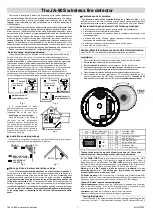
21
Auto Delay Modes
As part of the current HDMI standard, TVs and source equipment
are able to inform each other of their internal video and audio
delays, or "latencies". They do this by exchanging this
information in packets of "EDID" data. In theory this allows a
system to calculate the audio delay required for synchronization
without the viewer having to set the delay manually.
In practise, much HDMI equipment does not provide these video
and audio latencies so automatic audio delay is not possible in
those cases. In addition, even using equipment that does
provide these latencies, the delays are fixed and do not take into
account such factors as delays in the source material itself, e.g.
the particular blu-ray disc or the television broadcast. So manual
audio delay selection still provides best results for lip-sync.
Auto Delay Mode
As well as manual delay mode as described in previous sections,
the HD940 also provide an Auto Delay Mode that uses the
latencies from your TV and source equipment. So you can
choose automatic or manual delay mode as you wish.
Selecting Auto Delay Mode
Press
. If your HDMI equipment provides audio and video
latencies, then Auto Delay mode will be selected. The on-screen
display will show the automatic delay in blue.
AUTO 93 ms
If your HDMI equipment does not provide audio and video
latencies then Auto Delay mode has no way to know what delay
to set. In this case the HD940 will show an error in red:
No Latency Info
Note though that an advanced feature of the HD940 means,
even if your HDMI equipment does not provide latencies, you
can still use Auto Delay mode. See
Replacement Auto Latencies
on page 33 for information.
















































